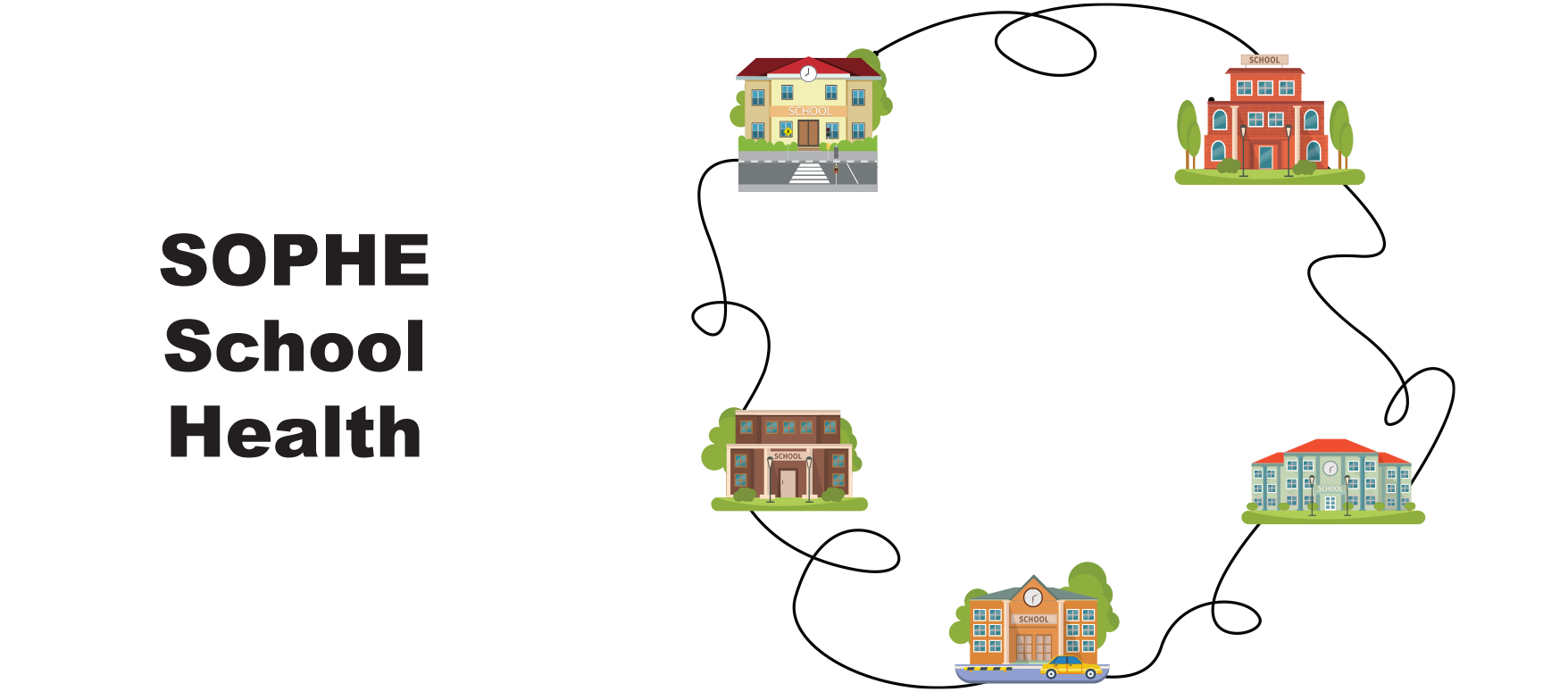
School Health Education Teacher Preparation Model Guidance
Section 2: SOPHE 2019 Health Education Teacher Preparation (HETP) Standards
This section reviews the SOPHE 2019 HETP Standards and discusses the resources and tools available to health education teacher preparation programs to participate in the accreditation process.
SOPHE 2019 Health Education Teacher Preparation (HETP) Standards
The goal of SOPHE’s HETP Standards are to focus health education teacher preparation program curricula on these six key standards. The standards are further explained in twenty-eight components to enable candidates to provide prekindergarten through grade 12 (preK-12) learners with the necessary knowledge, skills, and attitudes they need to choose health-enhancing behaviors.
The SOPHE HETP Standards (2019) outline the competencies expected of health education candidates who have completed their initial teacher licensure program and are ready to begin work in the field as a health education teacher. This resource helps faculty and staff in health education teacher preparation programs tailor courses to address six key standards in health education including the following:
- Functional knowledge about effective health education curricula, health behavior theories, health education standards, the whole child approach, risk and protective factors, ways to prevent chronic and communicable diseases, and the multidimensionality of health, plus the literacy skills of an informed consumer that help them create meaningful learning experiences
- Assessing needs and assets of learners, learning, and the learning community in order to inform their practice
- Planning of cohesive, sequential lessons and units that include ways to accommodate students’ differing strengths and needs and that use 21st-century technology in order to support students’ acquisition of functional health knowledge, health-related skills, and health beliefs
- Implementation via employment of a variety of research/theory-based instructional strategies in a well-managed classroom that encourages all learners regardless of race, ethnic origin, religion, gender, gender identity, sexual orientation, family structure, English-language proficiency, and physical or cognitive ability to adopt healthy behaviors and to interact positively with others; candidates reflect on their practice and adapt their practice in order to meet students’ and instructional needs.
- Evaluation using multiple assessment methods that are aligned with standards and learning objectives to measure students’ achievement, document their progress, and guide instructional practice
- Professionalism demonstrated using ethical practices; makes the case for the value of health education to academic success as well as wellness; advocates for both programs’ and students’ welfare; makes appropriate referrals; engages students’ families regardless of race, ethnic origin, religion, gender, gender identity, sexual orientation, family structure, English-language proficiency, and physical or cognitive ability; engages colleagues within the school and community as well as the community at large using a variety of media including social media; and demonstrates a lifelong learner disposition (SOPHE, 2019).
SOPHE has also oriented the HETP Standards to focus on health education teacher knowledge and skills related to diversity, families, communication, and collaboration (SOPHE, 2019). The standards require teacher candidates to possess a deep knowledge content and an understanding of pedagogical skills that include digital learning. The materials emphasize evidenced-based practice and expect practiced-based teacher education.
Resources:
- Sample Matrix worksheet for Use by Programs in Preparing Their Portfolio (Appendix D)
- Sample Program Template (Appendix E)
- Example Rubrics (STANDARD 4)
Suggested Use Within Curriculum:
Faculty and staff are encouraged to direct their students to these resources as an introduction to professional development in the field of school health education. These resources are not intended to be provided to teacher candidates in any particular course but instead integrated in courses throughout the curriculum. All coursework within HETE stand-alone and joint programs should reflect the necessary skills and knowledge as outlined by the standards and their components. Faculty and staff are recommended to
- emphasize the standards whenever possible,
- integrate the standards into existing curricula or frame future courses according to the standards,
- place the standards addressed within their syllabi and align to course assignments and topics,
- integrate the activities recommended within the SOPHE 2019 HETP Standards, and
- use and tailor the sample rubrics for evaluation as recommended by the SOPHE 2019 HETP Standards.
By using and integrating the standards within HETE coursework, faculty and staff can guide needed revisions and development of professional preparation curricula, provide states with resources for establishing their own teacher education health education standards, and provide input into health education teacher performance assessment.
HETP Standards Resources
-
Assessments, Rubrics, Exemplars SOPHEAssessments, Rubrics, Exemplars SOPHEYou must log in to access content.
-
Sample Matrix Worksheet for Use by Programs in Preparing Their Portfolio_SOPHESample Matrix Worksheet for Use by Programs in Preparing Their Portfolio_SOPHEYou must log in to access content.
-
SAMPLE RUBRICS for Assessing health education teacher candidates_SOPHESAMPLE RUBRICS for Assessing health education teacher candidates_SOPHEYou must log in to access content.
| Access Date | Quiz Result | Score | Actions |
|---|

